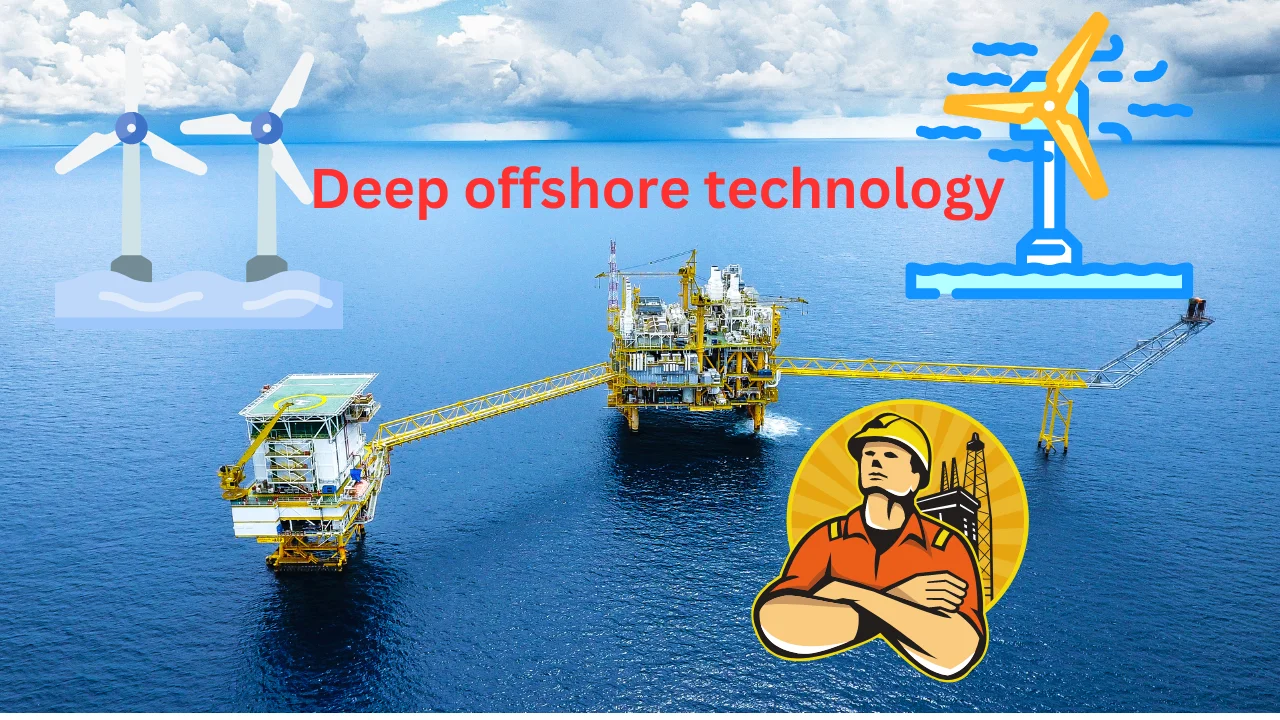Introduction
Deep offshore technology, an integral part of the oil and gas industry, has been revolutionizing the way we explore and exploit underwater resources. As the demand for energy continues to grow globally, the ability to extract resources from beneath the ocean floor has become increasingly vital. This article delves into the intricacies of deep offshore technology, its advancements, challenges, and the future it holds for the energy sector.
The Evolution of Offshore Technology
The journey of offshore technology began in the mid-20th century when the first shallow-water oil rigs were developed. However, as easily accessible resources dwindled, the industry pushed the boundaries further offshore into deeper waters. This necessitated the development of advanced technologies capable of operating in extreme conditions.
Early Developments
The initial offshore platforms were stationary structures built on the seabed in shallow waters. These platforms evolved into more complex designs such as jack-up rigs, which could be raised or lowered depending on the water depth. The development of semi-submersible rigs marked a significant leap, allowing operations in deeper waters due to their ability to float and remain stable.
The Advent of Deepwater Drilling
The late 20th century saw the advent of deepwater drilling technologies. Floating production systems, tension-leg platforms, and subsea production systems became commonplace. These technologies enabled drilling at depths exceeding 1,500 meters, a feat previously thought impossible.
Key Technologies in Deep Offshore Exploration
Deep offshore technology encompasses a range of sophisticated systems and equipment designed to withstand harsh underwater environments. Key technologies include.
Subsea Production Systems
Subsea production systems are crucial for extracting oil and gas from the ocean floor. These systems consist of wellheads, subsea trees, and flowlines that transport the extracted resources to processing facilities. The subsea infrastructure must withstand immense pressure, low temperatures, and corrosive seawater.
Floating Production Storage and Offloading (FPSO) Units
FPSO units are vessels used to process and store hydrocarbons extracted from subsea wells. They offer flexibility in deepwater operations as they can be moored at different locations. FPSOs are equipped with processing equipment, storage tanks, and offloading systems to transfer oil to shuttle tankers.
Remote Operated Vehicles (ROVs)
ROVs are unmanned underwater robots used for inspection, maintenance, and repair of subsea equipment. They are equipped with cameras, sensors, and manipulator arms to perform tasks in challenging underwater environments. ROVs play a critical role in ensuring the integrity and functionality of subsea systems.
Drilling Technologies
Advanced drilling technologies have made deepwater exploration more efficient and safer. Dynamic positioning systems allow drilling rigs to maintain their position over a wellbore without anchors. Dual-gradient drilling, managed pressure drilling, and horizontal drilling techniques enhance the accuracy and stability of deepwater drilling operations.
Challenges in Deep Offshore Exploration
Despite the advancements in technology, deep offshore exploration presents several challenges that need to be addressed for sustainable and safe operations.
Environmental Concerns
The potential for oil spills and leaks in deepwater operations poses significant environmental risks. The Deepwater Horizon disaster in 2010 highlighted the catastrophic consequences of such incidents. Strict regulations and advanced containment and response systems are essential to mitigate these risks.
High Costs
Deepwater exploration is capital-intensive due to the complexity of the technology and the harsh operating conditions. The cost of drilling a single deepwater well can exceed hundreds of millions of dollars. Economic viability is a critical consideration, especially during periods of low oil prices.
Technical Challenges
Operating in deepwater environments involves extreme pressure, low temperatures, and corrosive conditions. Equipment must be designed to withstand these harsh conditions. Additionally, the distance from shore-based facilities poses logistical challenges for transportation and supply chain management.
Safety Concerns
The safety of personnel working on offshore rigs is paramount. The remote location and harsh environment increase the risk of accidents. Advanced safety protocols, training programs, and emergency response systems are essential to ensure the well-being of offshore workers.
Innovations Driving the Future of Deep Offshore Technology
The future of deep offshore technology is shaped by continuous innovation aimed at improving efficiency, safety, and environmental sustainability. Several key trends are driving these advancements:
Digitalization and Automation
The integration of digital technologies such as the Internet of Things (IoT), artificial intelligence (AI), and big data analytics is transforming offshore operations. Real-time monitoring and predictive maintenance enhance equipment reliability. Automation reduces human intervention, minimizing the risk of accidents and improving operational efficiency.
Subsea Processing
Subsea processing involves the treatment and separation of hydrocarbons at the seabed, reducing the need for surface facilities. This technology minimizes the environmental footprint and enhances the recovery of resources from challenging reservoirs. Subsea compressors, pumps, and separators are at the forefront of this innovation.
Enhanced Safety Measures
Advancements in safety technology are crucial for protecting offshore personnel and the environment. Enhanced blowout preventers, emergency shut-down systems, and advanced firefighting equipment improve response capabilities in case of emergencies. Continuous training and simulation programs ensure that personnel are prepared for any eventuality.
Renewable Energy Integration
The offshore industry is increasingly exploring the integration of renewable energy sources such as offshore wind and wave energy. Hybrid platforms that combine oil and gas production with renewable energy generation offer a more sustainable approach. These platforms can reduce carbon emissions and extend the lifespan of offshore installations.
Case Studies: Successful Deep Offshore Projects
Several deep offshore projects have demonstrated the potential of advanced technologies and innovative approaches. These projects highlight the industry’s capability to overcome challenges and achieve significant milestones.
The Gulf of Mexico
The Gulf of Mexico is a prominent region for deepwater exploration. Projects such as the Perdido platform, operated by Shell, and the Thunder Horse platform, operated by BP, have set records for deepwater drilling and production. These projects showcase the successful application of cutting-edge technologies in extreme environments.
Offshore Brazil
Brazil’s pre-salt oil fields are located beneath thick layers of salt, posing unique challenges for exploration. Petrobras, Brazil’s state-owned oil company, has achieved remarkable success in extracting resources from these reservoirs. Innovations in drilling techniques and subsea systems have been instrumental in these achievements.
North Sea Projects
The North Sea remains a significant hub for offshore oil and gas production. The Johan Sverdrup field in Norway, operated by Equinor, is one of the largest offshore developments in recent years. The project incorporates advanced digital technologies and renewable energy integration to enhance sustainability.
Conclusion
Deep offshore technology is at the forefront of the energy industry’s efforts to meet growing global demand. The evolution of this technology has enabled the exploration and production of resources from previously inaccessible depths. However, the industry must continue to address environmental, economic, and technical challenges to ensure sustainable and safe operations.
As digitalization, automation, and renewable energy integration drive future innovations, deep offshore technology will play a pivotal role in shaping the energy landscape. The successful implementation of advanced systems and the commitment to environmental stewardship will determine the industry’s ability to harness the vast potential of the world’s deepwater resources.












+ There are no comments
Add yours